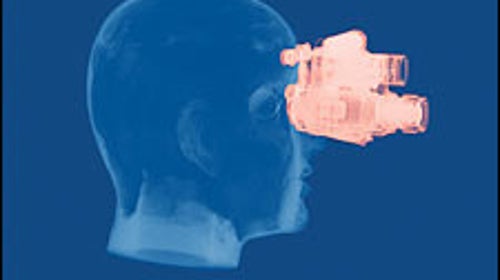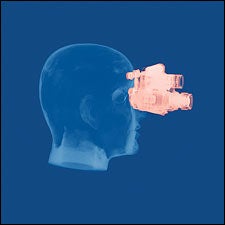THE LONG DAYS ARE BARELY BEGINNING TO WANE, but that doesn’t mean you need to start making room in the garage for your summer gear. Trust us, playing in the dark is more fun than the StairMaster and C-SPAN. And it’s not like you have to pick your way through the woods with a D-cell Maglite duct-taped to your bike helmet anymore. Manufacturers designing headlamps, task lights, and lighting systems suitable for gravity sports and the rigors of backpacking have shaved ounces off their products. Better still, advancing technology in the fields of LEDs and rechargeable batteries (many offering twice the power of their precursors) now spells unprecedented burn times and smaller power packs. Most units now also offer multiple brightness settings that give energy efficiency an added boost. Put simply, portable lights are brighter, lighter, and more efficient than ever.
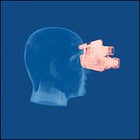
All of which has outdoor athletes riding, climbing, and paddling into the dark seemingly en masse. Once an oddball event held yearly in West Virginia, 24-hour mountain-bike racing is now the fastest-growing branch of the sport. Yosemite speed climbers bivvy less and climb more, often zipping right past teams snoring away in the dark on their portaledges. And moonlit sea-kayaking outings are fast becoming the rage in urban harbors like San Francisco, where darkness adds a welcome element of solitude. In response to growing demand, in the past eight years the sports-lighting business has doubled in size. Which means there’s plenty of illumination out there to choose from—even a stealthy night-vision option for you serious gadget hounds. To make your selection easier, we’ve assembled the best and brightest lights for nocturnal athletics and expeditions. Flame on!
Night Owl Optics’ Tempest, Niterider’s Storm H.I.D., and the Photon Microlight 3
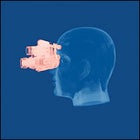
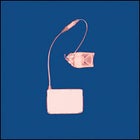

Do NIGHT OWL OPTICS’ TEMPEST night-vision goggles represent the future of night sports? Perhaps not yet. They work well enough: Strap the Russian-made headset to your skull in complete darkness and the world lights up in eerie shades of green. The problem, other than the weight (two pounds), is that the Tempest’s twin barrels cut off peripheral vision while simultaneously messing with your depth perception—you’re looking at an image of reality projected on a tiny screen. Birders like ’em—as do gizmophiles and Navy SEALs on patrol—but the Tempest isn’t about to revolutionize the midnight mountain-bike-racing scene anytime soon. Burn time: 24 hours. ($700; 212-229-0297, www.nightowloptics.com)
Like the bluish low beams on BMWs, the bulb inside NITERIDER’S STORM H.I.D. bike light is a metal-halide lamp, not a halogen. Such so-called high-intensity discharge lights are four times as bright, cool-running, and three times as efficient as their ouch-that’s-hot predecessors, making this 34-ounce helmet-mounted beam (a rechargeable nickel-metal battery slips into your CamelBak) the best choice for 24-hour racing. You could also freeze an entire herd of mule deer in its tracks—that is, if you’re into that sort of thing. Burn time: four hours (older headlamp units last less than two). ($400; 858-268-9316, www.niterider.com)
If you dare not venture into the woods without a knife, compass, and matches, you’ll need toadd the PHOTON MICRO-LIGHT 3 to your survival kit. Weighing just 5.5 grams, this tiny lithium-powered LED flashlight (it’s about the size of three stacked quarters) features seven programmable modes, including auto shutoff, strobe, and three brightness levels. Set it on low and it’s bright enough to read by; set it on bright strobe and the SAR team will spot you from a mile away. Burn time on high: 20 hours. ($22; 541-925-3741, www.photonlight.com)
Nightsun Team Issue Lightman and Black Diamond’s Supernova
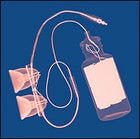
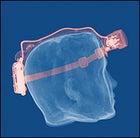
Attach the dual-beam NIGHTSUN TEAM ISSUE onto your road bike’s handlebars and you’ll light up the asphalt like a five-ball Roman candle. Run a single beam at dusk, run both in dark hollows, or flick the second bulb like a high beam as you roll up to intersections. The LIGHTMAN rear strobe (not shown), which draws its juice from the same water-bottle-shaped nicad battery and adds only five ounces to the 37-ounce system, is a must for commuting. Burn time: three hours on single beam. ($175; 626-799-5074, www.night-sun.com. Taillight: $40.)
Once upon a time, headlamps had two settings: on and off. You burned the battery just as fast digging in your pack for energy gel at dusk as you did negotiating a col on a moonless night. BLACK DIAMOND’S 180-GRAM SUPERNOVA makes those old units look about as advanced as a match in the wind. The halogen alone has three brightness options that burn from three to ten hours, but a single click of the dimmer switch puts you in LED mode for 1,000 hours of task lighting. There’s even a six-volt backup battery that, in a pinch, buys you an extra 20 hours of illumination. Burn time on high: a respectable three hours. ($70; 801-278-5533, www.blackdiamondequipment.com)
Houston
FOR A STATE SO DANGED BIG, Texas manages to hide its wildlands in some off-the-beaten-path locales. But if you know where to look in Lone Star land, you’ll find ample wide-open spaces.
The New, New Thing
THE LIGHTHOUSE LAKES Kayak Trails Park (512-389-4642) is in Redfish Bay north of Port Aransas, three hours from Houston, San Antonio, and Austin. Three paddling trails, ranging from 1.25 miles to 6.8 miles, weave through a mangrove marsh with numbered signs that correspond to a map with GPS coordinates.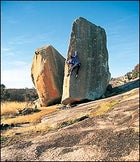 Texan pebbles, bouldering in exchanted Rock State Natural Area.
Texan pebbles, bouldering in exchanted Rock State Natural Area.THE HYPERACTIVE WEEKEND
HIT THE ROAD toward Burnet, in the Texas Hill Country 214 miles northwest of Houston. From there, head west 15 miles on Texas 29 toward Lake Buchanan, the largest and least-visited of the Highland Lakes chain, and check into Canyon of the Eagles Lodge and Nature Park (doubles, $99-$159; tent sites, $10-$15; 800-977-0081, www.canyonoftheeagles.com).
On Saturday, rise early for a run on the 12-mile network of trails on the lodge’s 940-acre spread, then cool down with a kayak paddle and a swim in Lake Buchanan (the five-mile-long beach is just down the hill from the lodge). But don’t dawdle. It’s a 45-minute drive south to Longhorn Caverns State Park for the two- to three-hour Wild Cave spelunking tour (make reservations; $35 per person; BYO hard hat, knee pads, and flashlight; 877-441-2283, www.longhorncaverns.com). After cleaning yourself off, head south another 13 miles to the Bluebonnet Cafe on U.S. 281 in Marble Falls for a classic Texas chat ‘n’ chew plate lunch (meat and three vegetables for about $6; 830-693-2344). From there it’s a 30-minute drive to the town of Tow, on the northwest shore of Buchanan. Bike the four miles to Fall Creek Vineyards and reward yourself with a sampling of wine and salsa (915-379-5361). Later, cruise 20 minutes southwest to Llano to line up for some of the state’s best barbecue at Cooper’s (915-247-5713). After dinner, waddle over to the Dabbs, a restored railroad hotel, in time to check in (doubles, $45-$65; 915-247-7905).
Fuel up early the next morning on buttermilk biscuits, do your morning laps in the Llano River, and then drive south 15 miles to Enchanted Rock State Natural Area, arriving by 10 a.m. (entrance fee, $5; 915-247-3903). Climbing Enchanted Rock, the 400-foot pink-granite dome, is a Texan rite of passage. Lunch is Cajun and Greek fare at the roadside Hilltop Cafe (830-997-8922), ten miles northwest of Fredericksburg. It’s another 20 minutes up U.S. 87 to Carrington’s Lodge, where you can dip flies in the Llano with fly-fishing instructor Raye Carrington ($150 for a three-hour session; 915-347-3474). Continue up U.S. 87 to the Eckert James River Bat Cave, where four million Mexican free-tailed bats emerge from their cave nursery for their nightly foraging (915-347-5970). Watch the sunset show, then head on home.
THE ADRENALINE RUSH
WITNESSING THE CORAL spawning in late August and early September at Flower Gardens Banks National Marine Sanctuary—a reef in the Gulf of Mexico—is like watching Fantasia underwater. Take a weekend trip on a live-aboard dive boat ($350-$445; Gulf Diving, 979-233-4445, www.gulf-diving.com) that starts with a 100-mile overnight trip out to the reef from Freeport, an hour southeast of Houston. The reward is seven dives in the domain of whale sharks and monster manta and eagle rays.
THE WILDERNESS FORAY
BIG THICKET NATIONAL PRESERVE (409-246-2337, www.nps.gov/bith), an hour and a half east of Houston, is one of the most biologically diverse areas in North America—a place where eastern forests, coastal plains, and Midwestern prairie converge. Get a whiff of its majesty on the lightly trekked 18-mile Turkey Creek Trail.
THE RECHARGE SPOT
THE VERY RUSTIC Pine Needle Lodge (doubles, $65; 903-665-2911, www.pineneedlelodge.com) sits on the north shore of Caddo Lake, three hours or less from Houston or Dallas. It’s the prime launchpad for paddling the cypress-lined swamp, a waterway so ethereal it would be easy to get lost if not for the “boat roads” marking the way. This is solitude you won’t find within a 500-mile radius.
